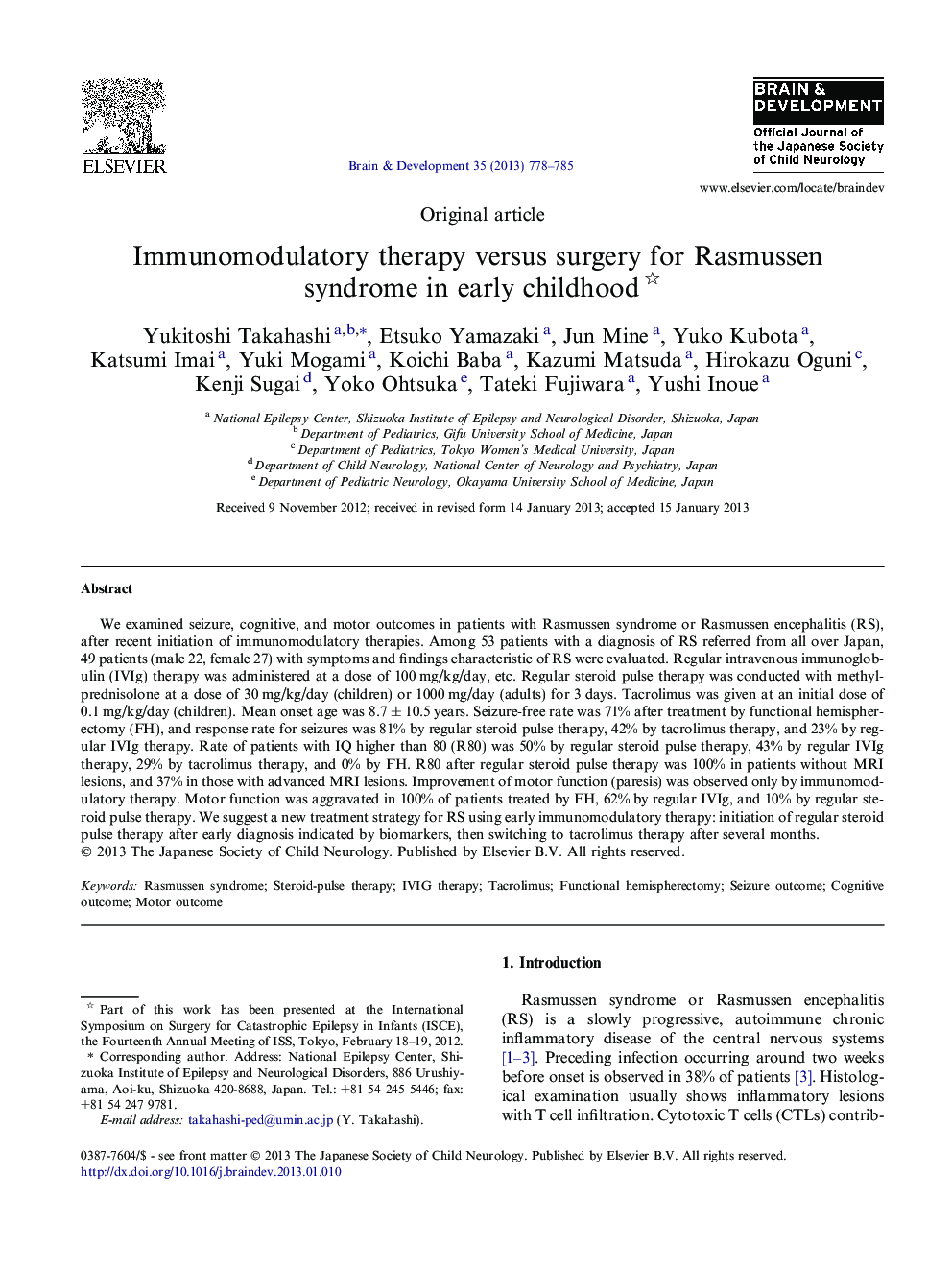| Article ID | Journal | Published Year | Pages | File Type |
|---|---|---|---|---|
| 3036939 | Brain and Development | 2013 | 8 Pages |
We examined seizure, cognitive, and motor outcomes in patients with Rasmussen syndrome or Rasmussen encephalitis (RS), after recent initiation of immunomodulatory therapies. Among 53 patients with a diagnosis of RS referred from all over Japan, 49 patients (male 22, female 27) with symptoms and findings characteristic of RS were evaluated. Regular intravenous immunoglobulin (IVIg) therapy was administered at a dose of 100 mg/kg/day, etc. Regular steroid pulse therapy was conducted with methylprednisolone at a dose of 30 mg/kg/day (children) or 1000 mg/day (adults) for 3 days. Tacrolimus was given at an initial dose of 0.1 mg/kg/day (children). Mean onset age was 8.7 ± 10.5 years. Seizure-free rate was 71% after treatment by functional hemispherectomy (FH), and response rate for seizures was 81% by regular steroid pulse therapy, 42% by tacrolimus therapy, and 23% by regular IVIg therapy. Rate of patients with IQ higher than 80 (R80) was 50% by regular steroid pulse therapy, 43% by regular IVIg therapy, 29% by tacrolimus therapy, and 0% by FH. R80 after regular steroid pulse therapy was 100% in patients without MRI lesions, and 37% in those with advanced MRI lesions. Improvement of motor function (paresis) was observed only by immunomodulatory therapy. Motor function was aggravated in 100% of patients treated by FH, 62% by regular IVIg, and 10% by regular steroid pulse therapy. We suggest a new treatment strategy for RS using early immunomodulatory therapy: initiation of regular steroid pulse therapy after early diagnosis indicated by biomarkers, then switching to tacrolimus therapy after several months.
